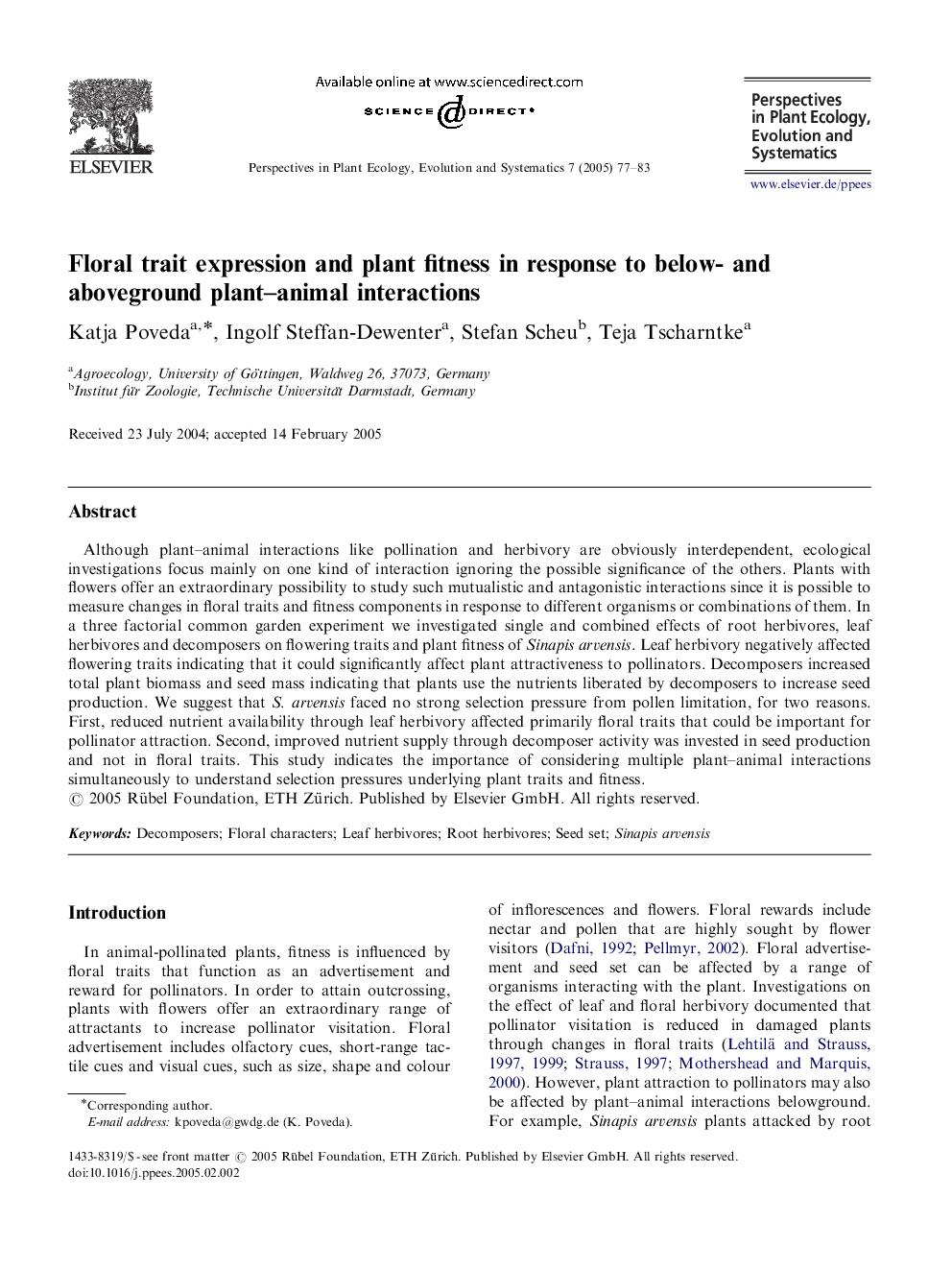| Article ID | Journal | Published Year | Pages | File Type |
|---|---|---|---|---|
| 9450828 | Perspectives in Plant Ecology, Evolution and Systematics | 2005 | 7 Pages |
Abstract
Although plant-animal interactions like pollination and herbivory are obviously interdependent, ecological investigations focus mainly on one kind of interaction ignoring the possible significance of the others. Plants with flowers offer an extraordinary possibility to study such mutualistic and antagonistic interactions since it is possible to measure changes in floral traits and fitness components in response to different organisms or combinations of them. In a three factorial common garden experiment we investigated single and combined effects of root herbivores, leaf herbivores and decomposers on flowering traits and plant fitness of Sinapis arvensis. Leaf herbivory negatively affected flowering traits indicating that it could significantly affect plant attractiveness to pollinators. Decomposers increased total plant biomass and seed mass indicating that plants use the nutrients liberated by decomposers to increase seed production. We suggest that S. arvensis faced no strong selection pressure from pollen limitation, for two reasons. First, reduced nutrient availability through leaf herbivory affected primarily floral traits that could be important for pollinator attraction. Second, improved nutrient supply through decomposer activity was invested in seed production and not in floral traits. This study indicates the importance of considering multiple plant-animal interactions simultaneously to understand selection pressures underlying plant traits and fitness.
Keywords
Related Topics
Life Sciences
Agricultural and Biological Sciences
Ecology, Evolution, Behavior and Systematics
Authors
Katja Poveda, Ingolf Steffan-Dewenter, Stefan Scheu, Teja Tscharntke,
